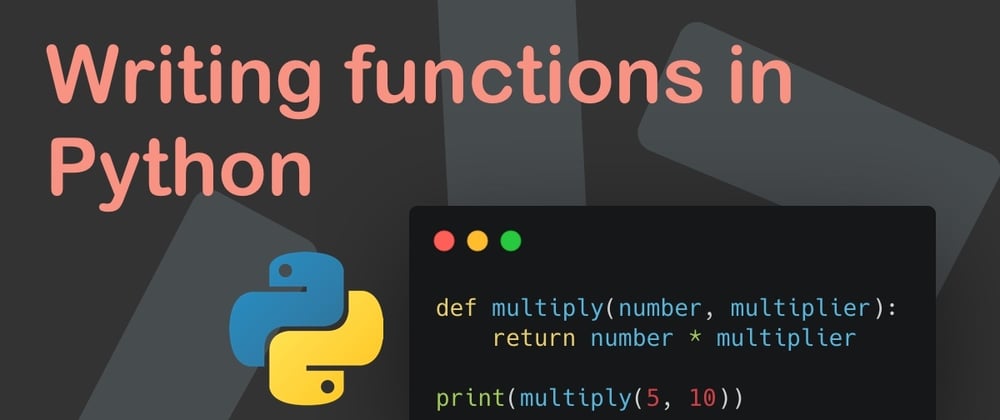Functions are an essential part of programming, as they can execute a block of code at once.
Often it's an excellent way to re-use blocks of code.
Let's give it a go and see how they work in Python.
Creating a function in Python
A function is made by prefixing the def keyword.
def foo():
print("Bar")
However, running our code now will not do anything since we didn't call our function yet.
Executing the function
To run/execute the function, we must call it somewhere in our code. In general, this happens when a specific criterion is matched, but let's just run it as is.
def foo():
print("Bar")
foo()
When we run our code now, it returns Bar
Passing and returning data
Having a function that prints out something is not convenient so let's see how we can give it data and return something.
Let's say we want to make a function that multiplies a number by itself and returns the output.
Meaning, if we put in the number 5, it should run 5x5 and return 25.
def multiply(number):
return number * number
print(multiply(5))
Running this code will indeed return 25.
We can easily have the function accept multiple arguments like so:
def multiply(number, multiplier):
return number * multiplier
print(multiply(5, 10))
This will return 50.
And one cool thing we can do is send the arguments based on their key value like this.
multiply(number=5, multiplier=2)
You might not know how many arguments you're expecting in some cases, and you can prepend the argument with an asterisk (*).
def feed_animals(*animals):
print(animals)
print(animals[1])
feed_animals('Cow', 'Chicken', 'Goat')
Which will return:
('Cow', 'Chicken', 'Goat')
Goat
There are some more additions to functions, but this covers the basics for Python functions.
Thank you for reading, and let's connect!
Thank you for reading my blog. Feel free to subscribe to my email newsletter and connect on Facebook or Twitter







Top comments (6)
Keep up the work Chris.
An extension of functions are lambda functions. They are one liners that make it easy to embed them inline with other functions.
Generally its not best practice to name a lambda like this though, and linters will yell and tell you to just make a regular function. Their power is embedding in other objects easily.
Yeah had Lambda on my sheet, so they are basically your shorthand arrow function compared to JavaScript?
Or why are they introduced?
I must say I find the full write-out more readable at the moment, but might come in handy for sure!
Fair enough, but at this point I'm learning it, and it's a valid way for me to see what it does, it's how I learn so why can't other people learn like that?
Especially if you haven't crossed the debugging part yet 😅
But valid point that a production app shouldn't have logs, same for console.logs in JS
Oh cool, thanks for this information will look into that!
Great to see you are diving in Python :-)
I began to use it a long time ago when Perl dominate the scene.
Good journey :-)
Yeah it's quite fun to see the differences, and so far liking how many built-in stuff Python has